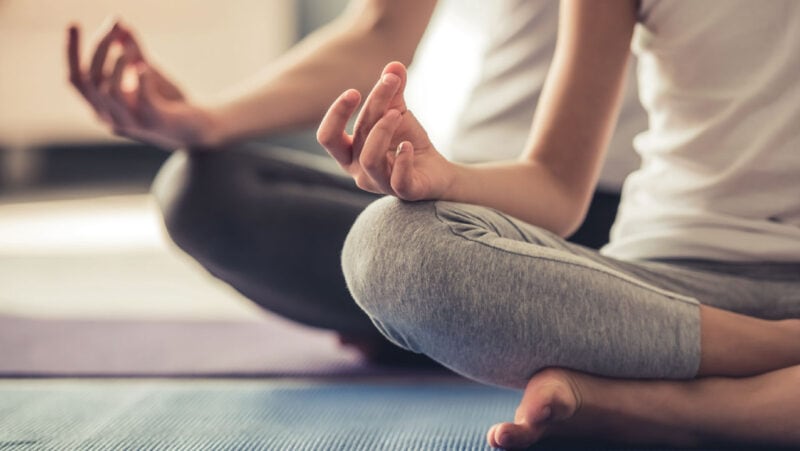Ever wondered what you should eat ahead of your yoga class? Joanne Hart offers some simple tips on eating mindfully throughout the day
Eating on the go
Many of us struggle to find time to eat; we’re rushing to work in the morning, grabbing a quick lunch or rushing home after work to go straight to our evening yoga class. Even though we know food is important, sometimes just eating or eating the right food doesn’t get the priority it deserves. Yoga provides us with the practice of ahimsa which is commonly translated as non-violence to others, so perhaps we can apply that same idea to ourselves by nourishing our bodies with quality food. We’ll then have the energy and resilience to look after ourselves
and others.
Breakfast
Start by planning your breakfast, it will set you up for the day. When you’re short on time in the morning you could prepare something the night before so you’re ready to go. Simple ideas include a couple of boiled eggs cooked and peeled the night before, or a pot of natural yoghurt with the spoon on the table ready to use. A liquid breakfast is even faster. Try a smoothie made from natural yoghurt and berries, sweetened with honey if you need to. It takes a minute to make, and if you make double the quantity, you also have a tasty morning snack. If you’re already organised with your breakfasts but in a rut and eating the same thing each day then try adding one new breakfast each week until you have a week of different breakfasts.
AM/PM snacks
A morning and afternoon snack can be valuable for blood sugar balancing. Many people find that this simple addition to their day helps them to avoid afternoon energy and emotional dips; they make sure to avoid gaps of more than three hours without eating. If your main meals are adequate, then something like an egg cup size of nuts and seeds or a mini tub of houmous and carrot sticks should be enough to keep you going.
Lunch
Take the time and indecision out of what to have for lunch. Start by choosing a protein source. Many people find that eating some protein for lunch keeps them full throughout the afternoon and that they also make better decisions about afternoon food temptations (if you’re a vegetarian, there are still plenty of choices, such as eggs, dairy, beans, pulses, soya). The next step is to think about what to add to the meal to get more nutrients. That might be a bag of prepared salad, some leftover vegetables cooked the night before, or maybe you can make a soup that combines both protein and vegetables. By including a variety of foods with bright colours you can get a wider range of nutrients across the week.
Time out
It’s really important to make time to stop and eat because the ‘rest and digest’ part of our nervous system needs us to do that. If you’re still doing things like working on the computer then your body physiologically isn’t getting the opportunity to digest properly. If you’re susceptible to bloating or other digestive niggles then this might be particularly important to you.
Dinner
Many yoga classes are in the evening which means you have to decide whether to eat before or after class. It’s quite common for yoga teachers to advise people to avoid eating for two hours before a class. However, if you feel hungry or lightheaded when you arrive at the class or during it, then that might suggest you need more food either closer to the class time or more protein and food with slower energy releasing carbohydrates like wholemeal rice earlier on. It’s very personal for each individual. And, just like you experiment with new asanas and modifications in your class, you can experiment with what and when you eat your food to find what suits you.
After class
There are no rules about what to eat for which meal during the day. And, after your class, or when it’s close to bedtime, a quick bowl of porridge, a good quality whey, pea or hemp protein drink or scrambled eggs and vegetables might be right for you. Aim for something that you find easy to digest before sleep but avoid refined carbohydrates like white rice, bread or cakes that might have a negative effect on blood sugar levels, and might affect sleep or energy the next day.
Give yourself permission
It’s easy to make a few changes and achieve positive results by understanding that you need to make time to eat for your body’s physiological digestion process and to be able to nourish yourself so you have the energy to do your yoga and to be able to practice ahimsa. Give yourself permission to find time to eat well and eat the way you need to, by incorporating some of these tips into your day. Your body will love you for it.
Joanne Hart is a yoga teacher, registered nutritional therapist and motivational coach healthandhart.com







